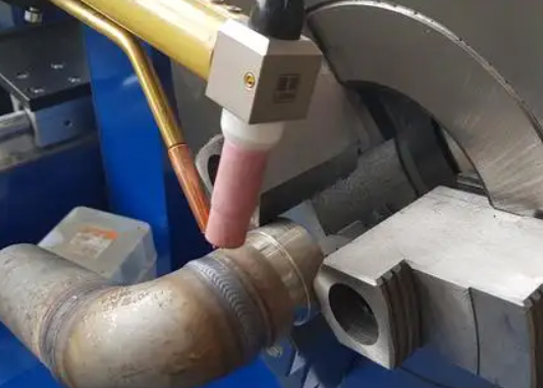TIG WELDING - GAS TUNGSTEN ARC WELDING (GTAW)
(2023年04月08日)https://www.hunkmachining.com/tig-welding-gas-tungsten-arc-welding-gtaw.html
TIG welding (Tungsten Inert Gas Welding), also known as non melting inert gas arc welding. TIG welding is the most commonly used welding method whether in manual welding or automatic welding of 0.5-4.0mm thick stainless steel. TIG welding with filler wire is often used for backing welding of pressure vessels, because the gas tightness of TIG welding supply is good and can reduce the porosity of the weld during pressure vessel welding. The heat source of TIG welding is DC arc, the working voltage is 10-95 V, but the current can reach 600 A. Workpiece is connected to the positive electrode of the power supply, and the tungsten electrode in the welding torch is used as the negative electrode. The inert gas is generally argon.
ADVANTAGES OF TIG WELDING - GAS TUNGSTEN ARC WELDING (GAS GTAW)
Argon can effectively isolate the surrounding air. It is insoluble in metals and does not react with metals. In the process of gas tungsten metal arc welding , the arc also has the function of automatically removing the oxide film on the workpiece surface. Therefore, it can successfully weld non-ferrous metals, stainless steels and various alloys that are easy to oxidize, nitride and have strong chemical activity.
Tungsten arc is stable. It can burn stably even at a small welding current (< 10A). It is especially suitable for welding thin and ultra-thin plates.
The heat source and filler wire can be controlled separately, so the heat input can be easily adjusted, and welding at various positions can be carried out.
WHAT IS THE APPLICATION OF TIG WELDING?
Due to the protection of argon, the harmful effect of air on molten metals can be isolated. Therefore, TIG welding is widely used to weld non-ferrous metals such as aluminum, magnesium and their alloys, stainless steel, superalloys, titanium and titanium alloys that are easy to oxidize, as well as refractory active metals such as molybdenum, niobium and zirconium.
For more common materials such as carbon steel and low-alloy steel, TIG welding is generally not adopted except for occasions requiring high welding quality.
More details of metal work fabrication process, please visit our website.
- このできごとのURL:




コメント